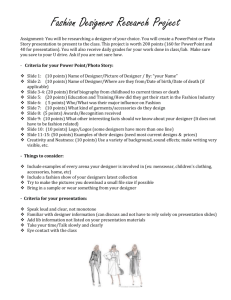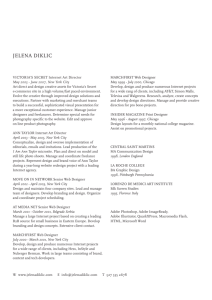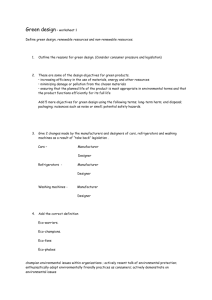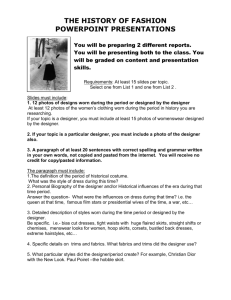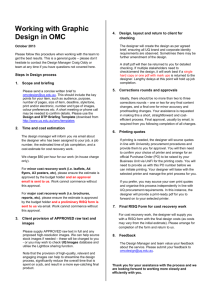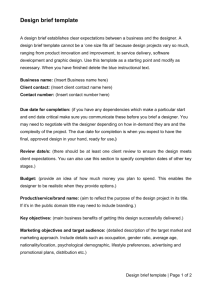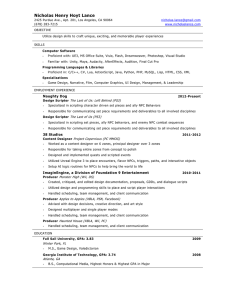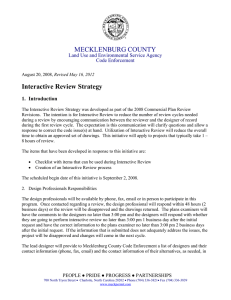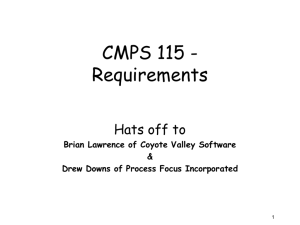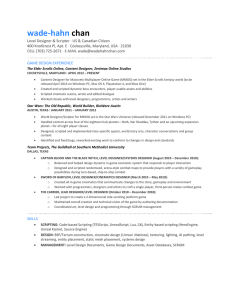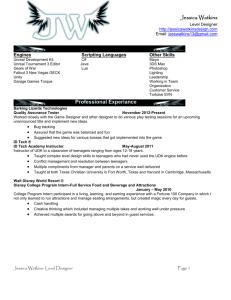Topic 2.3: Business Rules
advertisement
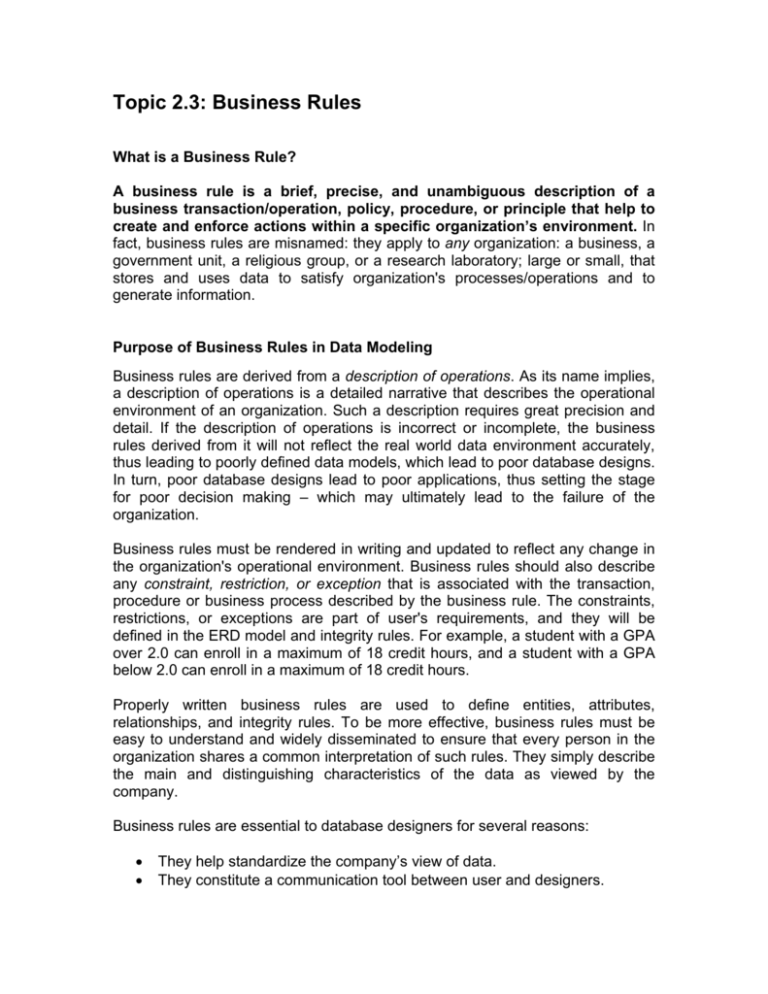
Topic 2.3: Business Rules What is a Business Rule? A business rule is a brief, precise, and unambiguous description of a business transaction/operation, policy, procedure, or principle that help to create and enforce actions within a specific organization’s environment. In fact, business rules are misnamed: they apply to any organization: a business, a government unit, a religious group, or a research laboratory; large or small, that stores and uses data to satisfy organization's processes/operations and to generate information. Purpose of Business Rules in Data Modeling Business rules are derived from a description of operations. As its name implies, a description of operations is a detailed narrative that describes the operational environment of an organization. Such a description requires great precision and detail. If the description of operations is incorrect or incomplete, the business rules derived from it will not reflect the real world data environment accurately, thus leading to poorly defined data models, which lead to poor database designs. In turn, poor database designs lead to poor applications, thus setting the stage for poor decision making – which may ultimately lead to the failure of the organization. Business rules must be rendered in writing and updated to reflect any change in the organization's operational environment. Business rules should also describe any constraint, restriction, or exception that is associated with the transaction, procedure or business process described by the business rule. The constraints, restrictions, or exceptions are part of user's requirements, and they will be defined in the ERD model and integrity rules. For example, a student with a GPA over 2.0 can enroll in a maximum of 18 credit hours, and a student with a GPA below 2.0 can enroll in a maximum of 18 credit hours. Properly written business rules are used to define entities, attributes, relationships, and integrity rules. To be more effective, business rules must be easy to understand and widely disseminated to ensure that every person in the organization shares a common interpretation of such rules. They simply describe the main and distinguishing characteristics of the data as viewed by the company. Business rules are essential to database designers for several reasons: • • They help standardize the company’s view of data. They constitute a communication tool between user and designers. • • • They allow the designer to understand the nature, role, and scope of the data. They allow the designer to understand the business process. They allow the designer to develop appropriate relationship participation rules and entity cardinalities based on constraints, restrictions, or exceptions described by the business rule. Examples of business rules are: ° ° ° ° ° A customer may make numerous payments on account. Each payment on account is credited to only one customer. A machine operator may not work more than 10 hours in a day. This is an example of a restriction or constraint applied to the working hours of operators. A business trip destination must be at least 300 kilometers away for an airline ticket to be purchased. This is an example of a constraint applied to the process of issuing air tickets. A company aircraft must have an airframe inspection every 100 flight hours. This is an example of a constraint applied to the process of airframe inspection. Source of Business Rules The main source of business rules are company managers, policy makers, department managers, and written documentations – such as a company’s procedures, standards, or operations manuals. It is likely that not all business rules are documented in an organization. Therefore, the database designer must be capable of formulating, documenting, and verifying the organizational business rules. A faster and more direct source of business rules is direct interviews with end users. However, because of differences in understanding by end users it may be worthwhile to verify end-user perceptions. If perceptions vary then the database designer’s job is to reconcile such differences and verify the result of reconciliation to ensure that the business rules are appropriate and accurate. Knowing the business rules promotes the creation of an accurate data model based on how the organization actually works and what role is played by the data within that organization's operations. Consequently, the database designer must identify the organization's business rules and analyze their impact on the nature, role, and scope of data. Concept Check What is a business rule? Why are business rules essential to database designers? What are the sources of business rules?





